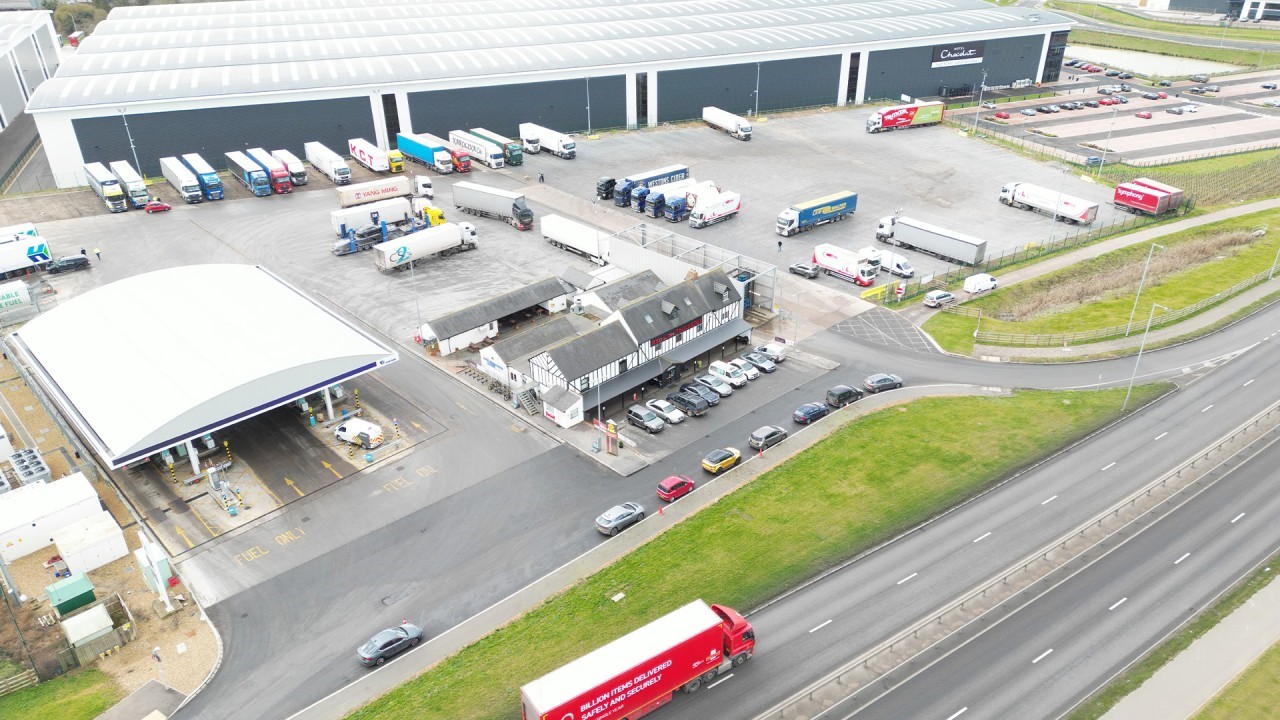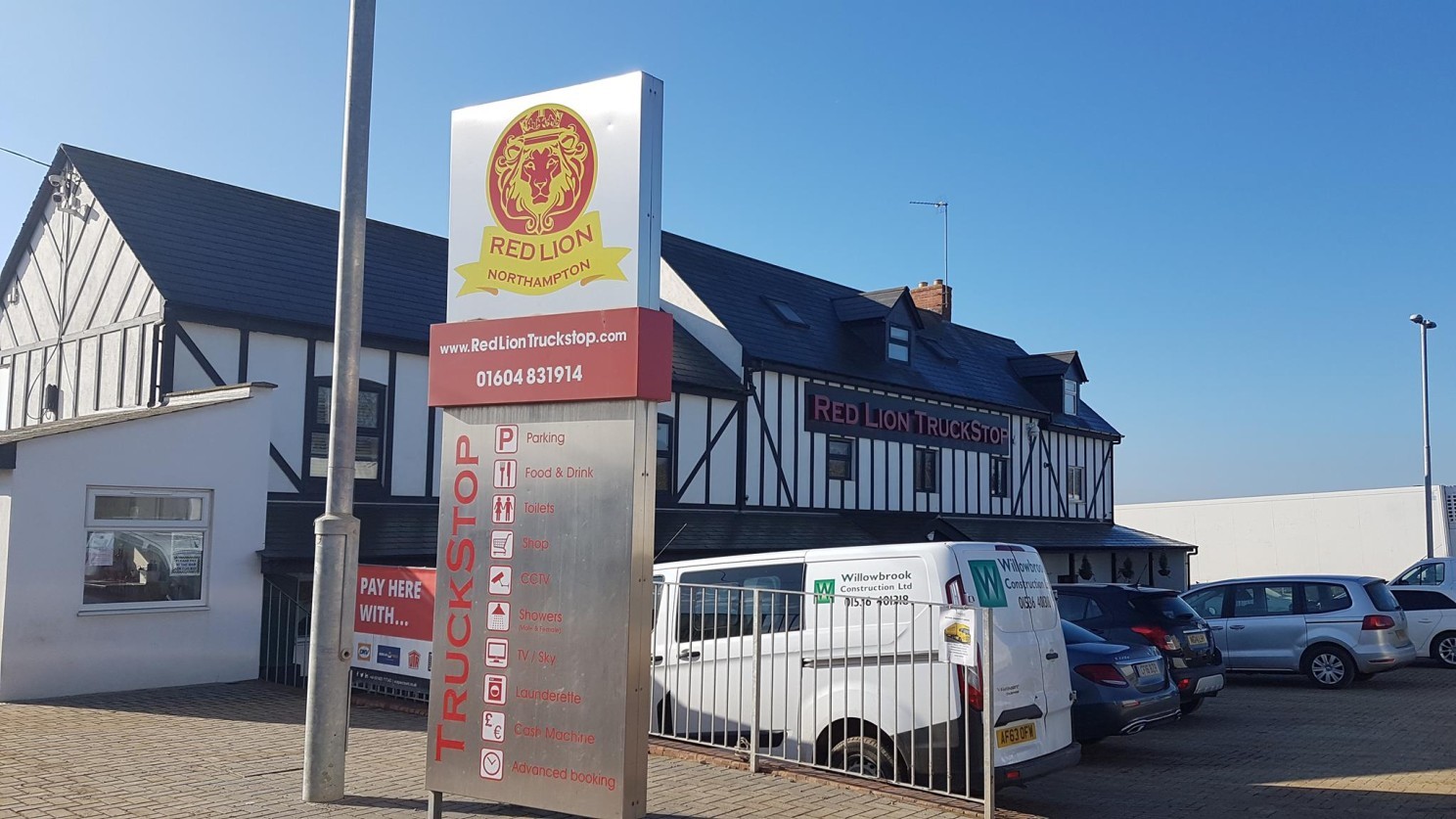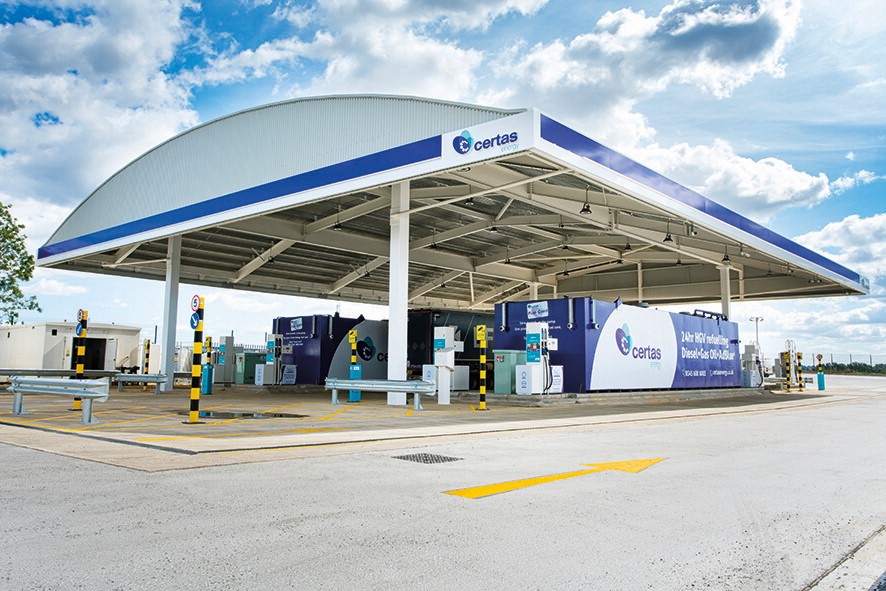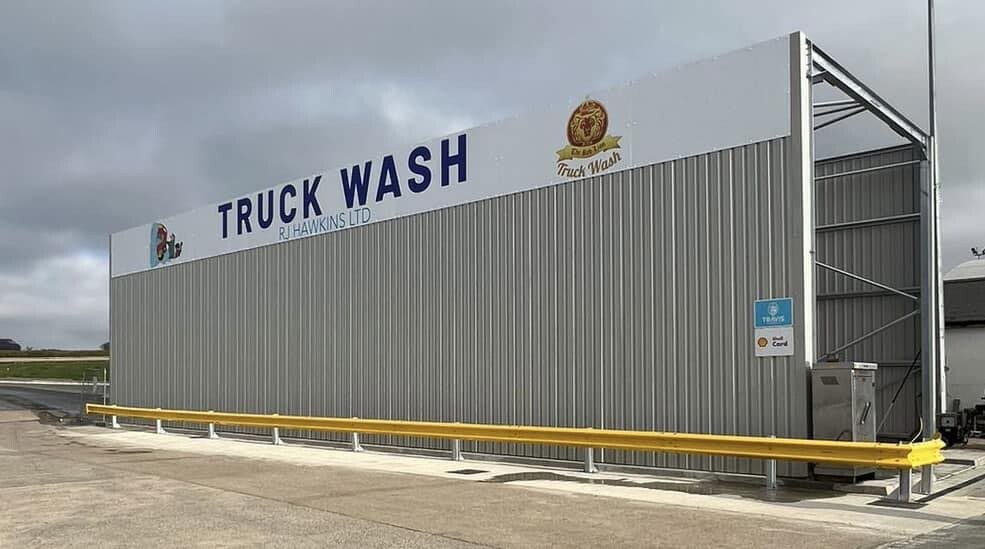
Susie Jones
Der Red Lion Truckstop - ein Erfolgsmodell
Erstellt: 28.08.2024
•
Aktualisiert: 28.08.2024
Nur 200 Meter von der M1 an der Anschlussstelle 16 entfernt befindet sich die Raststätte Red Lion. Das Red Lion wurde vor mehr als 30 Jahren gegründet und hat sich zu einem beliebten Ziel für Fahrer entwickelt. Das Gemeinschaftsgefühl, das köstliche Essen und die zahlreichen Einrichtungen machen diese preisgekrönte Raststätte zu einem beliebten Ausflugsziel für Trucker. Ali Sadrudin, der Betreiber des Red Lion, erzählt uns von dem Standort.
"Der Standort kann über 200 Lastwagen pro Nacht aufnehmen. Es gibt eine Hochgeschwindigkeitstankstelle, die nicht nur Diesel und AdBlue, sondern auch komprimiertes Erdgas (CNG) ausgibt. Außerdem gibt es eine neu gebaute, bemannte Waschanlage mit 3 Bürsten für Lkw. Das Freizeitgebäude verfügt über ein Restaurant und eine Bar, einen Laden für Lkw-Zubehör, einen Waschsalon, ein Spielcenter, Geldautomaten, bemannte Duschen und Toiletten sowie Veranstaltungsräume und Versammlungsräume."

Einrichtungen
Manche sehen in den Raststätten nur einen Ort, an dem sich die Fahrer ausruhen können, aber sie spielen auch eine wichtige Rolle bei der Verbesserung des Wohlbefindens der Fahrer. Wir bei SNAP wissen, dass es unerlässlich ist, den Fahrern saubere Einrichtungen zur Verfügung zu stellen. Aber was brauchen Lkw-Fahrer sonst noch?
"Ich glaube, dass die Kunden das Wesentliche suchen, aber richtig gemacht. Gutes Essen, saubere Einrichtungen und Sicherheit für ihre Fahrzeuge und ihre Ladung. Wenn man das bieten kann, wird man zufriedene und wiederkehrende Kunden haben", sagt Ali.
Ein kurzer Blick auf die Facebook-Seite des Red Lion verrät, dass sie dieses Mantra mit Sicherheit befolgen, und es funktioniert. Kommentare wie "toller Truckstop, der beste im Land" und "möglicherweise einer der besten Truckstops in England" unterstützen die über 4.000 positiven Google-Bewertungen.
Sicherheit und Schutz
Köstliche Mahlzeiten und saubere Einrichtungen sind jedoch nicht das Einzige, worauf Ali und sein Team Wert legen. Sie nehmen auch die Sicherheit sehr ernst. Im Jahr 2020 wurden im Vereinigten Königreich schätzungsweise über 4.000 Straftaten in den Bereichen Lkw, Fracht und Ladung verübt, die das Land 250 Millionen Pfund gekostet haben. Standorte wie das Red Lion haben Sicherheitsmaßnahmen eingeführt, um diese Zahl zu verringern.
Ali erklärt: "SNAP hat uns geholfen, die TAPA PSR Level 3 Zertifizierung zu erlangen." Im Februar 2023 wurde The Red Lion mit dem Park Mark Freight Award ausgezeichnet. Ali erklärt uns, welche Sicherheitsmaßnahmen getroffen wurden, um diese Auszeichnung zu erhalten.
"Der Standort ist von vornherein sicher. Wir haben rund um die Uhr bemannte Wachleute, die auf dem Gelände patrouillieren, und eine dritte Partei überwacht die Videoüberwachung. Das Gelände ist von einem 3 m hohen, ununterbrochenen Zaun umgeben, der an allen Stellen von fest installierten Kameras überwacht wird, um unbefugtes Betreten oder Beschädigungen der Zaunfelder zu erkennen. Das Gelände ist außerdem vollständig mit der von der Polizei vorgeschriebenen Beleuchtungsstärke beleuchtet, und es sind strategisch um das Gelände herum Kameras zur Bewegungserkennung angebracht, um jede unbefugte Bewegung zu erfassen und sicherzustellen, dass jeder Teil des Geländes überwacht wird. Ein ANPR-System zur Erfassung von Nummernschildern, die auf das Gelände ein- und ausfahren, und ein Schnellwarnsystem, das die Polizei alarmiert, falls ein Anruf erforderlich ist."
Das Red Lion hat außerdem zusätzliche Maßnahmen ergriffen, damit sich weibliche Fahrer bei ihren Besuchen wohl und sicher fühlen. Annehmlichkeiten wie Frauenduschen, Toiletten und Umkleideräume sind vorhanden. Diese Maßnahmen sind nicht unbemerkt geblieben, denn im Januar 2023 wurde die Raststätte zur besten britischen Raststätte für weibliche Lkw-Fahrer ernannt.

Umsatz und Expansion
Einer der vielen Vorteile für Standortmanager, die SNAP nutzen, ist die verbesserte Rentabilität und Optimierung. Als Gründungskunde von SNAP erklärt Ali, wie SNAP dem Unternehmen seit seinem Beitritt im Jahr 2009 zusätzliche Einnahmen beschert hat.
"Es war ein schrittweiser Prozess über die Jahre, aber da sich die Kaufgewohnheiten der Autofahrer ständig ändern und immer mehr bargeldlos werden, kann ich mir vorstellen, dass sich eine neue Website, die SNAP übernimmt, sofort rentieren würde. Ungefähr 65 % der Gesamteinnahmen der Website stammen von SNAP".
Seit 2009 haben sich die Dinge in der Branche sicherlich stark verändert. Ali erklärt, wie sich die Website an die veränderte Branche und die gestiegene Nachfrage anpassen musste.
"Ursprünglich konnte der Standort nur 130 Lkw pro Nacht aufnehmen, aber 2018 wurde der Standort auf 200+ erweitert, um der gestiegenen Nachfrage gerecht zu werden", erklärt Ali. Für Fahrer und Flotten, die SNAP nutzen, werden diese 200 Plätze leicht buchbar.
Nur vier Jahre später wurde der Standort mit der Einführung einer neuen Lkw-Waschanlage weiter ausgebaut. Die im November 2022 eröffnete hochmoderne Lkw-Waschanlage mit drei Bürsten ist für die meisten Lastkraftwagen geeignet.

Beitritt zu SNAP als Servicepartner
Durch den Beitritt zu SNAP wird Ihr Standort 160.000 Fahrern und 7.000 Fuhrparks zugänglich gemacht. Für Raststätten wie Red Lion, die ständig bestrebt sind, neue Initiativen und Einrichtungen für ihre Kunden anzubieten, bietet SNAP die Möglichkeit, dies zu tun.
"SNAP ermöglichte es der Website, eine alternative Zahlungsmethode anzubieten, die für den Kunden nur von Vorteil sein kann und ihn auf die Website lockt", sagt Ali.
Die Vorteile von SNAP
Über 160.000 Fahrer nutzen das SNAP-Konto. Daher sind hohe Standards unerlässlich. Obwohl es sich bei den Servicepartnern, die SNAP-Kontozahlungen akzeptieren, um unabhängige Unternehmen handelt, überprüfen wir jeden Standort und stellen sicher, dass er unseren Standards entspricht. Darüber hinaus steht unser Netzwerkteam bei Bedarf zur Verfügung.
"SNAP hat uns seit unserem ersten Beitritt immer unterstützt", sagt Ali.
Auf die Frage, was für sie das Beste an SNAP ist, antwortet Ali: "Es ist das Serviceniveau, sie sind weit darüber hinaus gegangen, um das Ticketingsystem an unsere Anforderungen anzupassen."
Und was rät er den Besitzern von LKW-Parkplätzen, die darüber nachdenken, ihren Standort für SNAP-Fahrer zu öffnen?
"Tun Sie es! Warum sollten Sie nicht zusätzliche Kunden auf Ihre Website bringen wollen?"
Melden Sie sich bei SNAP an
Um Ihre Rentabilität zu verbessern und den Betrieb Ihrer Website zu optimieren, besuchen Sie snapacc.com.



